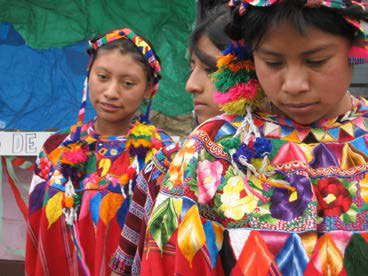 With a population of over 15 million, Guatemala is the largest country—and economy—in Central America. Guatemala’s population is roughly divided between urban and rural areas, with large disparities in economic development, access to health services, and health outcome indicators, especially in rural areas. More than half of the population lives in poverty.
With a population of over 15 million, Guatemala is the largest country—and economy—in Central America. Guatemala’s population is roughly divided between urban and rural areas, with large disparities in economic development, access to health services, and health outcome indicators, especially in rural areas. More than half of the population lives in poverty.
For years, Guatemala’s public health system benefited from a well-established regulatory framework, institutional history, dedicated and experienced health workers, and an absence of dependence on external sources for financial support. The Peace Accords of 1996 established the basis for a health system for all Guatemalans. Guatemala also benefited from the establishment of the Expansion of Coverage Program (Programa de Extension de Cobertura or PEC) in 1997 that aimed to improve access to health services for all Guatemalans, particularly in rural areas.
Over the years, PEC was operating more than 4,000 health facilities located in 4,500 jurisdictions covering 4.6 million people living in poor communities. Despite the institutional legacy, problems developed over recent decades, compromising the effectiveness of the public health sector—including the dismantling of PEC. Guatemala’s health system is now fragmented, inefficient, and fails to provide equality in service provision. There is a large disparity in access to services among the urban and rural communities.
Assessing the Health System to Inform Strengthening Efforts
Strengthening Guatemala’s health system requires a thorough understanding of the system’s unique strengths and weaknesses. The HFG project conducted a Health System Assessment (HSA) for USAID/Guatemala in the spring of 2015, with the primary objective of mapping the strengths and weaknesses of Guatemala’s health system, and providing recommendations to guide health system strengthening efforts. By providing a baseline assessment and diagnosis of the current health system and presenting cross-cutting recommendations, the report is intended as a policymaking tool for the Guatemalan government. The report will inform decision-makers on how to strengthen the system and expand access to health services, especially for vulnerable groups.
Announcements and Successes
Publications
- Guatemala Health System Assessment 2015
- Análisis del sistema de salud de guatemala hallazgos y recomendaciones



